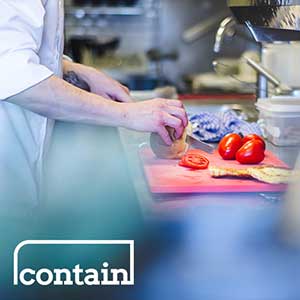February 26, 2024

When we first started Contain, we thought that the bulk of our clients would be urban farmers. Indeed, we have seen our fair share of former management consultants feeding their communities from a container farm. What we didn’t expect was that many clients would be based in rural areas, and that their lifestyles would be so diverse. Some are longstanding family ranches adding winter lettuce growing, others are backyard farmers upscaling their plans for rural living.
When we dug a little, we found that they’re part of a wider trend. According to the USDA’s Economic Research Service, the U.S. rural population grew approximately ¼% from 2020 to 2022. This growth came after a decade of overall population decline in rural areas, suggesting a renewed interest in rural living.
The largest driver of this move was, of course, COVID when some office employees got to work remotely. Some chose to do so from more spacious dwellings in a rural area rather than staying in cities, where restrictions were often more onerous. Research from The Daily Yonder showed that rural areas experienced more in-migration than urban areas during the pandemic. Rural counties grew by approximately 77,000 residents between 2020 and 2021. This growth outpaced urban growth both in percentage and absolute numbers during this period.
Reasons to Head to the Country
Much of the rural growth occurred in counties characterized as retirement destinations or those with economies dependent on recreation. During the pandemic, there was a significant increase in the number of Americans who took early retirement. Research from the Federal Reserve Bank of St. Louis showed approximately 2.6mn “excess” retirees beyond that predicted during the pandemic, a shift in retirement patterns.
But Boomers are not the only generation attracted to rural life. Gen Z is moving to rural areas for several key reasons: a desire to be closer to friends and family, more affordable living costs, and the flexibility to work from anywhere due to remote work opportunities. These factors, plus high costs of living and stress associated with city life, drive people towards smaller towns for a slower pace of life and more affordable housing options.
Work from Home Trend Continues
In 2023, the work-from-home trend continued, with about 35% of workers with jobs that can be done remotely working from home all the time. This fell from 43% in January 2022 and 55% in October 2020. It is still significantly higher than the pre-pandemic figure of only 7%. Additionally, 41% of these workers are now on a hybrid schedule, up from 35% in January 2022.
A Focus on Mental Health
Gen Z has different values to previous generations, with strong emphasis on mental health and community over traditional measures of success like financial gain. This generation is more open about discussing mental health issues and actively seeks workplaces that support their well-being. They value inclusivity and community engagement, preferring to contribute to a greater good not just individual financial success. This reflects a broader, more holistic approach to defining success and fulfillment in their personal and professional lives.
Cost of Living Issues
The final factor driving Gen Z towards rural areas is the cost of living, especially in housing. Housing in rural areas is approximately 30% cheaper than in urban areas, which can significantly impact overall living costs. This affordability, plus higher home ownership rates, makes rural living financially attractive for Gen Z-ers looking to manage expenses.
In turn, this suggests that Gen Z is a generation well suited to building community in rural and semi rural areas. This is an exciting possibility as it could mean an injection of life into America’s small towns. The question now, as we will explore in future blogs, is whether such areas have the social, economic and physical infrastructure that will allow Gen Z to thrive.

Indoor Agriculture Pivots to Home Gardens as Vertical Farming Failures Drive Strategic Reevaluation

Zordi Series B and May 2025 Indoor Agriculture Developments

Freight Farms Bankruptcy and iUNU’s $20M Raise Highlight April’s Indoor Ag Contrasts

Freight Farms Resources: Indoor Ag Companies Stepping Up to Support Freight Farmers

How to Finance Your Hydroponic Project in 2025: Finding Opportunity in a Shifting Market

Indoor Ag’s New Reality: Practical Advice from Investment Banker Adam Bergman

Plenty Unlimited bankruptcy dominates March’s indoor ag news, overshadowing new farm plans

80 Acres Farms secures $115m, Square Roots expands to Japan, and indoor ag sees farm shakeups in February

Robobees take flight, vanilla goes vertical, and a new IPO is on the horizon in indoor agriculture’s January

Canadian Agriculture Grants: 7 Funding Opportunities for Indoor Farming in 2025

Indoor Ag Outlook: Funding Trends and 2025 Projections
